Playing with Words and Music: An Interview with Victor Wooten (Part 2)
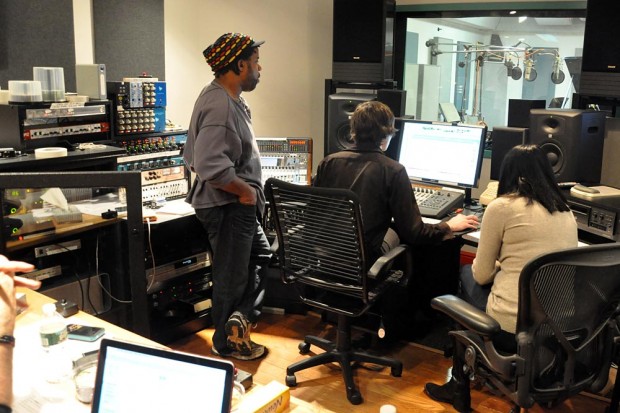
Since his first solo album, released in 1996, Victor Wooten has been intimately involved in the recording, producing and mixing of all his albums — part of a growing trend among musicians. From the mid-nineties forward, more and more artists have been getting their hands involved in the recording process. The introduction of the ADAT recorder in 1991 made home studios more affordable (and portable), and suddenly artists with a moderate amount of cash could build a respectful studio in which to record their own albums. At the same time, cutting edge digital recording gear during the last decade of the twentieth century seemed to change so fast that new formats became obsolete almost before you could get the gear home from the store (mini-disc recorder anyone?). But 1991 also saw the release of the first version of Pro Tools, which offered four tracks of recording for $6,000. A steep price for such limited capabilities, to be sure, but within a few years computer-based recording would become the new standard and digital home studios would become as common as the iPhone (and about as cheap). In fact, for some their digital recorder is their iPhone.
Of course, having the right equipment and knowing how to use it are two different things. Through the myriad of technological changes, Victor has continued to learn and adapt to new recording technologies, devoting countless hours to learning the craft of engineering, producing, and mixing. In so doing, his approach to recording has evolved, and his involvement in the recording process has increased as well. Case and point: his two new albums, Sword and Stone and Words and Tones, were pretty much completed from beginning to end in his home studio. In this interview, we ask Victor to share a little about the home studio recording process and to offer his advice to bassist into (or looking to get into) home recording. Along the way, he offers some behind-the-scenes glimpses into how creativity, spontaneity, and adaptability played an important role in the production of his two new albums.
Each album features the song “Sword and Stone” at the beginning. Can you tell us a little about the recording process of that song?
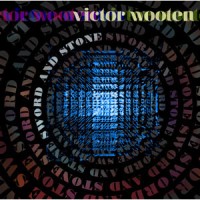 Originally, both of these albums were supposed to be reminiscent of Joni Mitchell’s Shadows and Light, with Jaco on bass and Pat Metheny on guitar. Really melodic and mellow—that was the idea for the whole record. I began working on the main groove of the title song, which I had recorded a while back in the memo section of my iPhone. As I was going through the drum patterns in Pro Tools, looking for something that would work with the melody, I stumbled across this little double time, Indian, clay pot instrument pattern. I thought it was really cool because it was totally opposite of what I was going for. I ended up going with that idea and then sent the track to David “Fingers” Haynes, a great electronic drum player, and he came over and recorded the drums parts for me.
Originally, both of these albums were supposed to be reminiscent of Joni Mitchell’s Shadows and Light, with Jaco on bass and Pat Metheny on guitar. Really melodic and mellow—that was the idea for the whole record. I began working on the main groove of the title song, which I had recorded a while back in the memo section of my iPhone. As I was going through the drum patterns in Pro Tools, looking for something that would work with the melody, I stumbled across this little double time, Indian, clay pot instrument pattern. I thought it was really cool because it was totally opposite of what I was going for. I ended up going with that idea and then sent the track to David “Fingers” Haynes, a great electronic drum player, and he came over and recorded the drums parts for me.
That song features an incredible female vocalist and a hammer dulcimer. Were those recorded in your home studio as well?
No, they were recorded in a studio located in New York. I was looking for a vocalist with a Latin flavor, but no one immediately came to mind. My friend [and Mike Stern saxophonist] Bob Franceschini told me, “You gotta get this woman I know to do it, Claudette Sierra. She’s the one you want.” So, without even meeting or hearing her, I booked the session in New York. I went up there and she just knocked it out. She was so much fun to work with and did a wonderful job. Since we were there, we also added Pedro Martinez on Congas. He’s a leading percussionist on the New York scene.
And the hammer dulcimer?
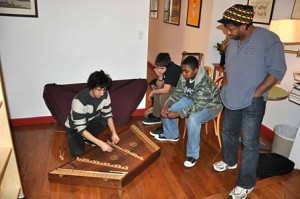 That’s an interesting story. A friend of my brother’s told me that since I was going to New York, I should check out this guy who plays hammer dulcimer [Max ZT]. I thought, “Yeah, right. A dulcimer player? Sure.” I was only in New York for a couple of days, but I passed along the address of the studio and invited him to come on by if he wanted. He showed up the day we recorded Claudette, and he was unbelievable. He just blew me away, so I asked him if I could record some of his playing. He agreed, so we put him in the control room, put a couple of mics on him, and had him play four short pieces. I ended up using one as the basis for the song “Listen and Be Silent.” For the instrumental version of “Sword and Stone,” I used a different piece for the beginning of the song.
That’s an interesting story. A friend of my brother’s told me that since I was going to New York, I should check out this guy who plays hammer dulcimer [Max ZT]. I thought, “Yeah, right. A dulcimer player? Sure.” I was only in New York for a couple of days, but I passed along the address of the studio and invited him to come on by if he wanted. He showed up the day we recorded Claudette, and he was unbelievable. He just blew me away, so I asked him if I could record some of his playing. He agreed, so we put him in the control room, put a couple of mics on him, and had him play four short pieces. I ended up using one as the basis for the song “Listen and Be Silent.” For the instrumental version of “Sword and Stone,” I used a different piece for the beginning of the song.
You mentioned using your iPhone in relation to writing that song. Can you explain how your phone factors into your recording process?
I use my phone all the time for recording ideas, and even for recording music that ends up on my albums. Most of the songs on these two new albums are in bits and pieces on my iPhone. I have months – even years – of tidbits and ideas on it. I record them into the memo section of my phone. The bass line for “Sword and Stone” was first a short piece on my phone. After the albums have been out for a bit, I plan on taking all those pieces from my phone and making a recording where you can hear the original piece from the phone, which a lot of times is me singing a bass line or melody playing it at a sound check. I will then fade from the iPhone version into the actual song. I plan on making that recording available to people through my website.
This album includes a cover of Steve Wonder’s “Overjoyed,” just as A Show of Hands did. But this version features a female vocalist singing the melody. Can you tell us about how this recording came about?
First of all, this track is over eight years old. The only new sounds on the track are six layers of me on cello and three layers of Casey Driessen [Flecktones] on violin. Eight years ago, the vocalist, Krystal Peterson, was hired by the city of Nashville to be part of a big Christmas production at the Grand Ole Opry, which is where I met her. My daughter Kaila, who was six at the time, was singing in it also. It was a big production, with lots of singers. There was one voice in the show that really stood out to me, though, and that was Krystal’s. I approached her one day after a rehearsal and asked her if she wouldn’t mind coming to the studio and recording something. I just wanted to get her on tape. We chose the song “Overjoyed” to record, so I had Joe [Wooten] and J. D. Blair come over. We first recorded the track and then had Krystal come over and lay down the vocals. She was unbelievable. All I’ve added new to the recording are strings. Everything else is from eight years ago, and her original vocals are as fresh to me now as they were then. It is one of my favorite vocal performances of all time.
She also sings on the song “A Woman’s Strength,” which is intense—musically, vocally, and lyrically. Can you give us a bit of background on the recording of that song?
I based the song on an experience I had with my wife’s mom, who was 82 at the time. Holly’s mom came with us to Louisville for a jazz conference a few years back and stayed in a separate room at our hotel. The morning after the first night we get there, she shows up at our booth with a cast on her arm. We ask her about it and learn that the previous night she fell and broke her wrist, went to the front desk and called an ambulance, got the break fixed, and then came and got in back bed. All without telling us. She acted like it was no big deal, but Holly was freakin’ out. Her mom said, “Oh, you’ll get over it.” I thought, “Man, this woman is so strong.” A week or so later, I drove her home to D.C. and on the way back began writing the music to the song by singing into my iPhone. A couple of friends from a band called Ancient Device were set to record with me when I got back home, so I decided I would have them play on this song.
That would be Kelly and Riley Ellis, correct?
Yes. I met them at one of our camps in 2007. Two brothers: one plays bass and one plays cello. When I got home that day, there were waiting for me. I told them to give me a couple of hours to get the track ready. I used the bass to lay down the main track and then Kelly and I added cello and Riley a bass part. The only lyric I had for the song at that point was, “There ain’t nothing like a woman. There ain’t nothing like a woman’s strength.” Krystal and I wrote the rest of the lyrics together when she came over to record the vocals.
Let’s talk “Brooklyn.” You’ve been playing Fodera’s since 1983. This song is not only about the luthiers Vinny Fodera and Joey Lauricella — it features them on guitar and bass. What was it like recording with the men who make your basses?
It was a joy for me, and I was happy it all came out so well. I really love the song, which includes vocals by Saundra Williams, who is from Brooklyn and helped write the lyrics. I was in New York again for this one, and Vinny and Joey came into the studio that day perfectly prepared to lay down the guitar and bass part. They just nailed it. I had given them a track of the song ahead of time and told them, “There’s a spot in the song where it breaks down in E, and that spot’s for you.” The day of the session they showed up ready to do it. Except for Vinny’s guitar, the whole song is bass and drums. Vinny played so well and sounded so good, and Joey laid down the bass part so fast—about one take and he was done. I was amazed.
Joey’s got some chops. He’s still a gigging bassist, right?
Yes, he still plays regularly. A real pro. He came in and just knocked it out perfectly.
This album features a lot of guest players and vocalists. You’ve been known to record anywhere and everyone to include guests on your albums. Any interesting places for these albums?
I recorded some live parts in hotel rooms, but as I mentioned, I also used my iPhone a lot. All of the vocals on “Listen and Be Silent” were recorded on an iPhone. I would ask people to say their parts into my iPhone, or have them record it into their own phone, and then send it to me. I used it in other ways too. For example, if you listen closely to the instrumental version of “Be What You Are,” you will hear strings in the background. Those were recorded using Garage Band on my iPhone. I was working on the song in my hotel room and didn’t have my cello, so I thought, “I wonder if I can play it on my phone.” I had planned on redoing the part later but decided it sounded fine and kept it. I also did a lot of the mixing of the album in hotel rooms, rather than in my studio.
“Keep It Low to the Ground” features a number of bass players, recorded over the period of a decade. Was it recorded in pieces here and there as well?
Yeah. It was a song I came up with on the road over ten years ago, when I was touring with my band. We started playing it live. We do that a lot when I have a good band, because I get inspired by them. This was at a time when you didn’t have to worry about everything new you played at a show ending up on YouTube. Later, I started recording it. During the summer NAMM shows over the next ten years, I would bring various bass players out to the studio and have them play on the song. In the end, I wound up with thirteen bass players on the song. I was still adding players up until a couple of months ago.
You’ve been recording your albums in your home studio for some time now. How much of this album was completed at your home studio, and what challenges did that pose?
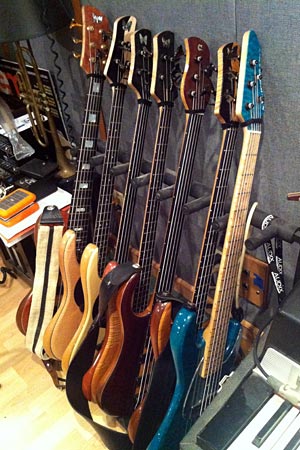 Just about all of it was done at my home studio, except for the little bit that was done at the studio in New York and a few bits here and there done on the road. Most of it was recorded right here in my home, though. I love being at home where I can work around the clock on it. Sometimes my kids go to bed and I’m at the console, and the next morning when they wake up I’m still at the console. The challenge with it is that I am often recording here by myself a lot. It’s a lot of fun having other musicians around — being able to bounce ideas off of them and such. But I do like my solitude as well. I built this studio with the plan of being able to do everything here, including mastering. I don’t know mastering well enough, though, so I have someone else do that for me at this point. The guy who masters my albums, Erik Wolf, uses the same speakers I record on [Meyer HD-1], so I know what I’m listening to the music at his place. After the album is mastered, I like to go listen to it in my car and at home before deciding if that’s the final version.
Just about all of it was done at my home studio, except for the little bit that was done at the studio in New York and a few bits here and there done on the road. Most of it was recorded right here in my home, though. I love being at home where I can work around the clock on it. Sometimes my kids go to bed and I’m at the console, and the next morning when they wake up I’m still at the console. The challenge with it is that I am often recording here by myself a lot. It’s a lot of fun having other musicians around — being able to bounce ideas off of them and such. But I do like my solitude as well. I built this studio with the plan of being able to do everything here, including mastering. I don’t know mastering well enough, though, so I have someone else do that for me at this point. The guy who masters my albums, Erik Wolf, uses the same speakers I record on [Meyer HD-1], so I know what I’m listening to the music at his place. After the album is mastered, I like to go listen to it in my car and at home before deciding if that’s the final version.
When it comes to recording, how do you think current technology both benefits and limits players?
The plus of it is that if I’m recording it at home I can take my time. I can punch in and fix everything perfectly. If I’m in the studio with a band, I don’t have as much time to spend on my part and get it just right — the way Anthony Jackson used to do many years ago. He would stay after a session and record until he got it right. When I’m home, I get to do that. That’s really good when I’m playing upright or cello, which I’m not as comfortable with as the bass. That’s the beauty of it.
What’s the downside?
Most of us aren’t good engineers, and we don’t know how to get the best sound. We’ve spent our lives playing our instruments, not engineering. There are people who do that better than us. If you are going to record yourself, it’s worth spending time learning how to do it right, but learning how to do it right also eats into your playing and creative time. When I started doing this, I had Steve Bailey come over and help me. He’s become a Pro Tools genius, and he still knows my studio better than I do. The cool thing is that when I have a question, I just call him up and he helps me. We’ll get on Skype and he’ll walk me through something. Every time he tells me something, I write it down. I have pages of notes. In the end, it’s good to have someone around who can help you learn the process. You have to learn the technical side of it. Otherwise, pay someone to do it for you.
The other downside of a home studio is that you don’t get to have the “studio experience,” which is always fun. Everyone shows up at the studio, hangs out, plays, goes to lunch, and then comes back and plays some more. I do miss that sometimes, but I still get the chance to do that here and there.
Many bassists now have home studios, which they use for remotely recording bass lines for a variety of artists. How should a bassist send that file to the engineer or artist? Should they manipulate the sound of the bass before sending it or send it over raw?
Send it raw first, so that the person you are working for has a chance of getting what he or she wants. If you have good ideas about your sound, then send a track doctored up with your ideas as well. I usually ask for both. Also, consolidate your tracks. Don’t send all the separate regions. Send one file. If a person sends me a MP3 to play along with, then I consolidate my track to make it the exact same length as the track they sent me. That helps them keep it lined up.
What advice would you give players regarding getting a good sound on their bass?
Have something to reference to. Take some CDs that you like and listen to your recording in comparison to these other CDs. Make sure the sound of your bass is just as good as that of the recording you like. Also, make sure you have a clean way to get your signal into whatever your recording into. Have good preamps, or whatever you need to get a good, clean signal. Above and beyond anything else, though, just make good music. That’s really the most important thing. If people like the song, they’re not gonna be as picky about the sound. The proof in the pudding is all the records many of us grew up listening to. They didn’t have the preamps we have today, and there were cracks and pops and such, but it wasn’t about the gear; it was about the music. Make good music and don’t let the gear get in the way or take over. Make it about the music and the musicians. When it comes to my own songs, I want you to listen to the music, not my gear.
Words and Tones and Sword and Stone are out now on CD (2 CD bundle), and in digital format – Words and Tones (iTunes and Amazon MP3) and Sword And Stone (iTunes and Amazon MP3).
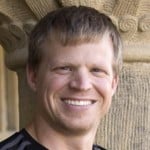
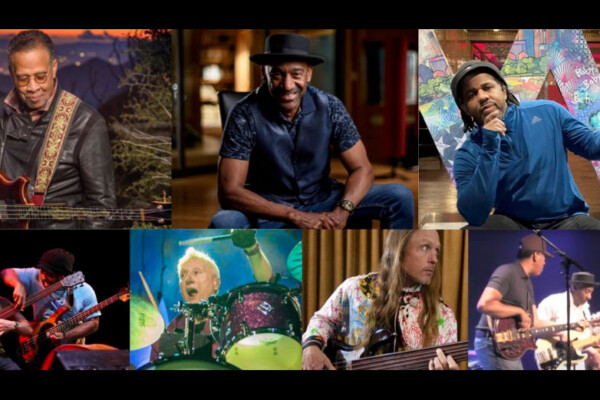
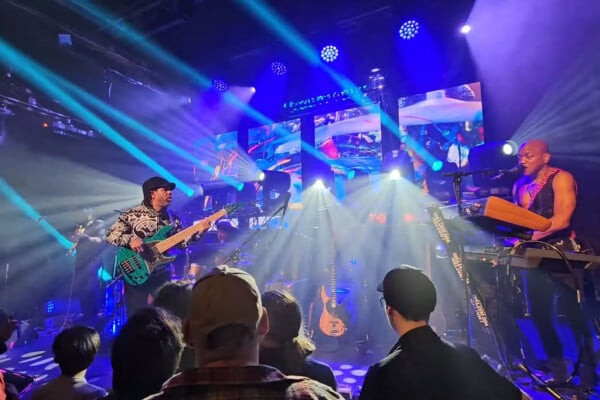
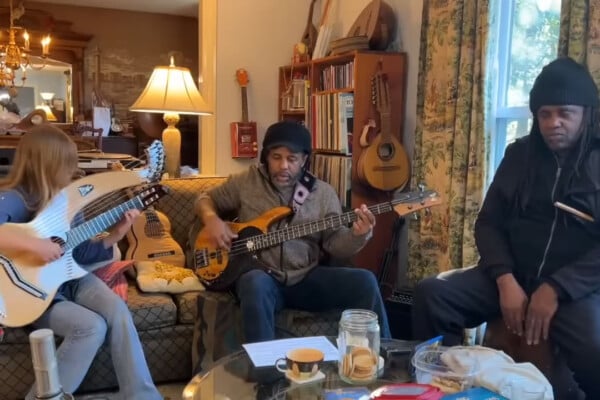
man how nice your the man vic love the place.